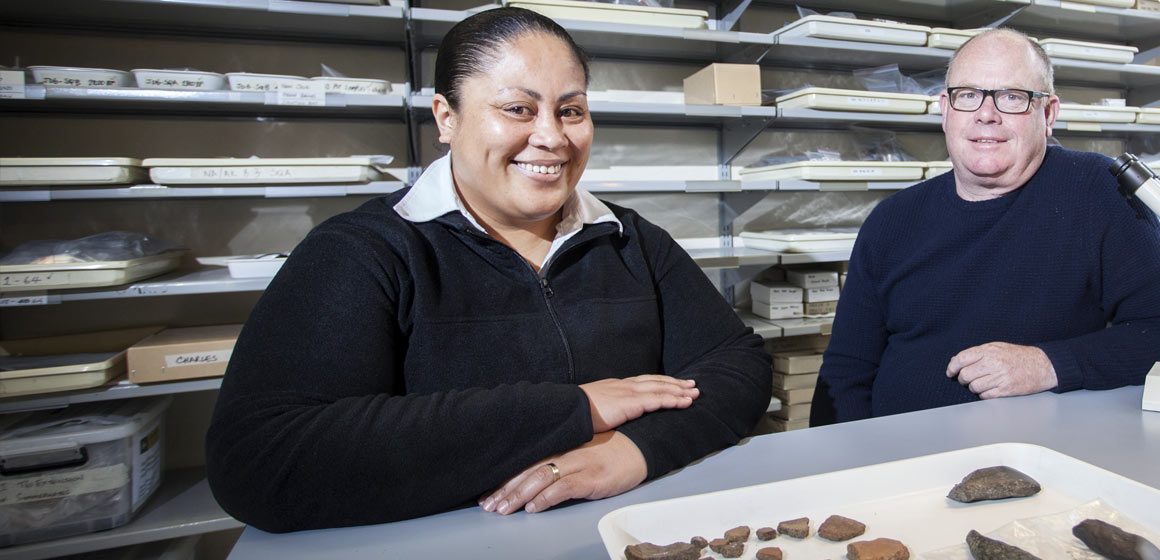
Tautala Asaua is aiming to rewrite the early prehistory of Samoa.
“A continuing problem in Samoan archaeology is the lack of data relating to the initial colonisation and settlement of the islands,” says the postgraduate archaeology student.
She explains that the consensus model is that Samoa, Fiji and Tonga were discovered and rapidly settled about 3,000 years ago by people who carried a distinctive type of decorated pottery called Lapita.
She says that comparative studies of pottery pieces, together with radiocarbon dating, have formed the basis for a chronological account of the early settlement of the region.
Asaua argues that there are problems with this model for Samoa: only one site containing the Lapita ceramics is known from Samoa, compared with 40 to 50 sites in Fiji and in Tonga. Also, the quality of information is poor, because the site is deeply submerged and the only data were recovered by dredging activities in the 1970s.
“Thus, the current archaeological interpretation of Samoa's early prehistory is not based on the record from Samoa, but on the assumption that Samoa followed a course of cultural developments seen elsewhere in the region. I am really interested in understanding why Samoa appears to be different from other places in the West Polynesia region.”
To do this, she is carrying out systematic archaeological excavations on Apolima Island in Independent Samoa.
“The primary objective is to define the sequence of the island's occupation, adaptation and land use, and to trace the emergence of distinctive Samoan lifeways.” She will use the Apolima data “to test new ideas and develop a model for re-framing Samoan prehistory”.
Her co-supervisor and mentor, Professor Richard Walter (Archaeology) has a special interest in the prehistory of Oceania.
“Fitting Samoa into the early colonisation models is one of the big problems we have in understanding the archaeology of West Polynesia, so Tautala's work is going to make a major contribution,” he says.
Asaua was born and raised in Auckland and completed a Master of Arts degree in archaeology at the University of Auckland before spending six years developing and teaching the archaeological programme at the National University of Samoa. She is currently on three years' study leave pursuing a PhD at Otago.
“Otago has a very strong presence in the Pacific,” says Asaua, “and the way Richard and other Otago archaeologists work alongside indigenous communities is the type of archaeology I want to be a part of.”
For his part, Walter says that working with most students is a one-on-one with the students. “But with Tautala, as a Pacific Islands student, I have responsibilities to Tautala, to her husband and children, to her parents and to her wider community in Samoa, whom she represents.”
Walter says that it is very rare for Polynesian women to be involved in archaeology – Asaua will become the first Samoan woman with a PhD in archaeology. “It is absolutely critical to have Pacific students involved in archaeology in the Pacific.”